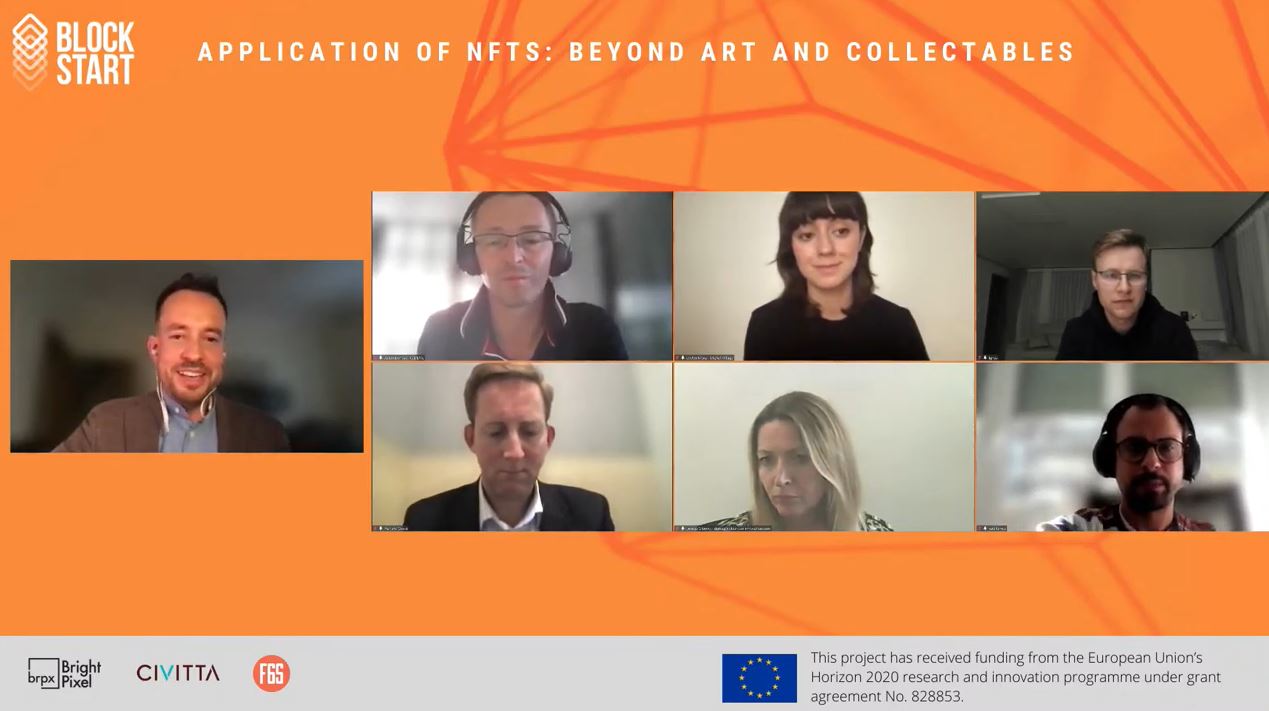On the 28th of October, industry leaders shared their expertise at a webinar about the NFTs organized by BlockStart. They presented the concept, discussed current trends and application cases. Take a look at the main takeaways
NFTs mark a turning point for digital transformation, as applications and integrations are spilling to various sectors: from music and events to energy and supply chains. The goal of the webinar was to grasp the transformative potential of NFTs and present the application cases.
Richard Crook, the founder and CEO of LAB577 started the webinar by presenting the general concept of NFTs and bringing everyone listening up to speed. NFTs – non-fungible tokens – are unique, non-interchangeable units of data, that are stored using distributed ledger technology (DLT). In the broadest sense, a token functions as a certificate of ownership. In the case of application in digital art, which is the breeding ground for NFTs, a token represents not the piece of art itself, but a certificate of ownership of that piece.
Richard gave a short overview of the history of NFTs. They have been around for a while now: CryptoPunks date back to 2017; OpenSea, the first NFTs marketplace has opened up in 2018. Currently, the ecosystem of marketplaces, infrastructure and games & collectables is booming with many entities entering the field. For the last 8 months, we have seen an explosion of NFT value, the deal of 4200 ETH ($7.2M USD at the time) for a CryptoPunk being one of the most notable examples.
Evelyn Mora, a founder of Digital Village IO, shared the idea behind the social metaverse she is creating. The goal of the Digital village is to introduce NFTs to a broader public. Evelyn explained that they want to give people easy access to a new virtual lifestyle and economy, empowered by blockchain. She shared her view on the metaverse as the next level of the Internet, where we should aim to optimise and improve the social media platforms to get the most of the time we spend online.
Xavier Tarrés from Blue Room Innovation presented the application case they developed at SCENTS, creating blockchain-based art expositions to cover the lifetime exhibits of digital art pieces. The problem they solve is the lack of a verifiable identity layer of the NFT creator. There is no reliable way for the potential buyer of NFT to verify the origin and the legitimacy of the NFT creator, and it opens a way for scams and frauds. SCENTS are linking the artwork identity and artist identity. By the use of self-sovereign identity, each artwork has an identity that is under the control of the artist. Every exposure in exhibitions, any other interactions (for example, likes), are linked to the artwork identity and can be collected by an artist into his pool of credentials.
Ignas Tauras, a researcher at a leading Korean exchange – Hanbitco, elaborated on the NFTs integration in Defi. He explained how a user, owning ETH, can lend them to someone who has an NFT and put it as collateral. This financial mechanism allows a lender to earn returns. Also, Ignas explained how fractionalization enables to divide NFTs and make them fungible. Fractionalization helps to create the community, makes the market liquid and establishes the market prices faster and more efficiently.
Julien Bringer, co-founder and CTO of HODLNG presented a case of NFTs use in energy, particularly in the gas market. He explained how NFTs for LNG (liquified natural gas) and biogas capture the information of a given biogas or LNG volume, helps to track the attributions of the volume along the supply chain and incentivizes sustainability based on GHG, CO2 and social impact.
If you have not been able to join us on the 28th of October, you can watch the video recording below:
